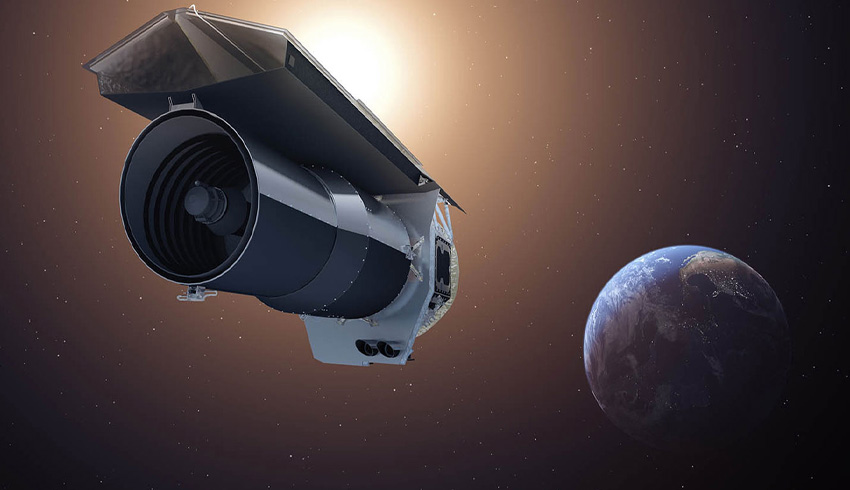The Nancy Grace Roman Space Telescope, NASA’s future space observatory, is due to launch in 2025 in search of other Earth-like worlds. It carries two instruments: one to study the mystery of dark energy distribution in the cosmos; and the first dedicated exoplanet imaging camera in space, the CGI (CoronaGraph Imager).
Within the CGI will be two high sensitivity cameras with electronic cores developed by ABB together with Nüvü.
Extra-solar planetary systems are extremely difficult to observe from large distances as planets are tremendously dimmer than their neighbouring star and barely separated from one another. NASA’s CGI complex arrangement of optical components manage to block out the star light and send the residual light of the nearby planet to a highly sensitive camera.
This is where the unique ABB/Nüvü imaging solution comes into play in revealing the unusual dot that was previously invisible.
Marc Corriveau, general manager ABB Measurement & Analytics Canada, said, “The Roman mission is a $3.2 billion project which should be 100 to 1,000 times more powerful for imaging exo-planets than what is achieved on the ground today. We are very proud to be supplying such a critical component in this groundbreaking mission. It is an exciting project which will require our most advanced technological expertise to succeed.”
The ABB contract win follows a recent contract award from GHGSAT, a private satellite constellation operator, to supply additional optical sensors capable of imaging methane leaks on the ground in high definition.
“We are thankful to the Canadian Space Agency (CSA) Space Technology Development Program, which enabled this revolutionary camera technology to be brought to a maturity level sufficient for its consideration by NASA‘s Jet Propulsion Laboratory,” said Olivier Daigle, chief technology officer at Nüvü Camēras.
ABB optical equipment already in space has accumulated more than 90 years of reliable operation. Since 2003, the SCISAT sensor has tracked long-term composition changes down to parts per trillion of more than 60 molecules and pollutants in the Earth’s atmosphere.
Weather agencies around the world base their predictions on ABB technology at the heart of the latest generation of polar satellites of the US National Oceanic and Atmospheric Administration (NOAA), which saves lives by improving the timeliness and accuracy of weather forecasts for up to seven days.
ABB sensors are also flying onboard the Japanese GOSAT 1 and 2 satellites monitoring at high accuracy the steady rise of greenhouse gases around the world since 2009.
ABB is a leading global technology company that energises the transformation of society and industry to achieve a more productive, sustainable future.
With a history stretching back more than 130 years, ABB’s success is driven by about 110,000 talented employees in over 100 countries.
Nüvü Camēras is a world leader in ultra-sensitive imaging solutions since 2010. The Canada-based company designs and manufactures cameras and controllers for markets such as space exploration and surveillance, industrial quality control, physics and life science diagnostics.

